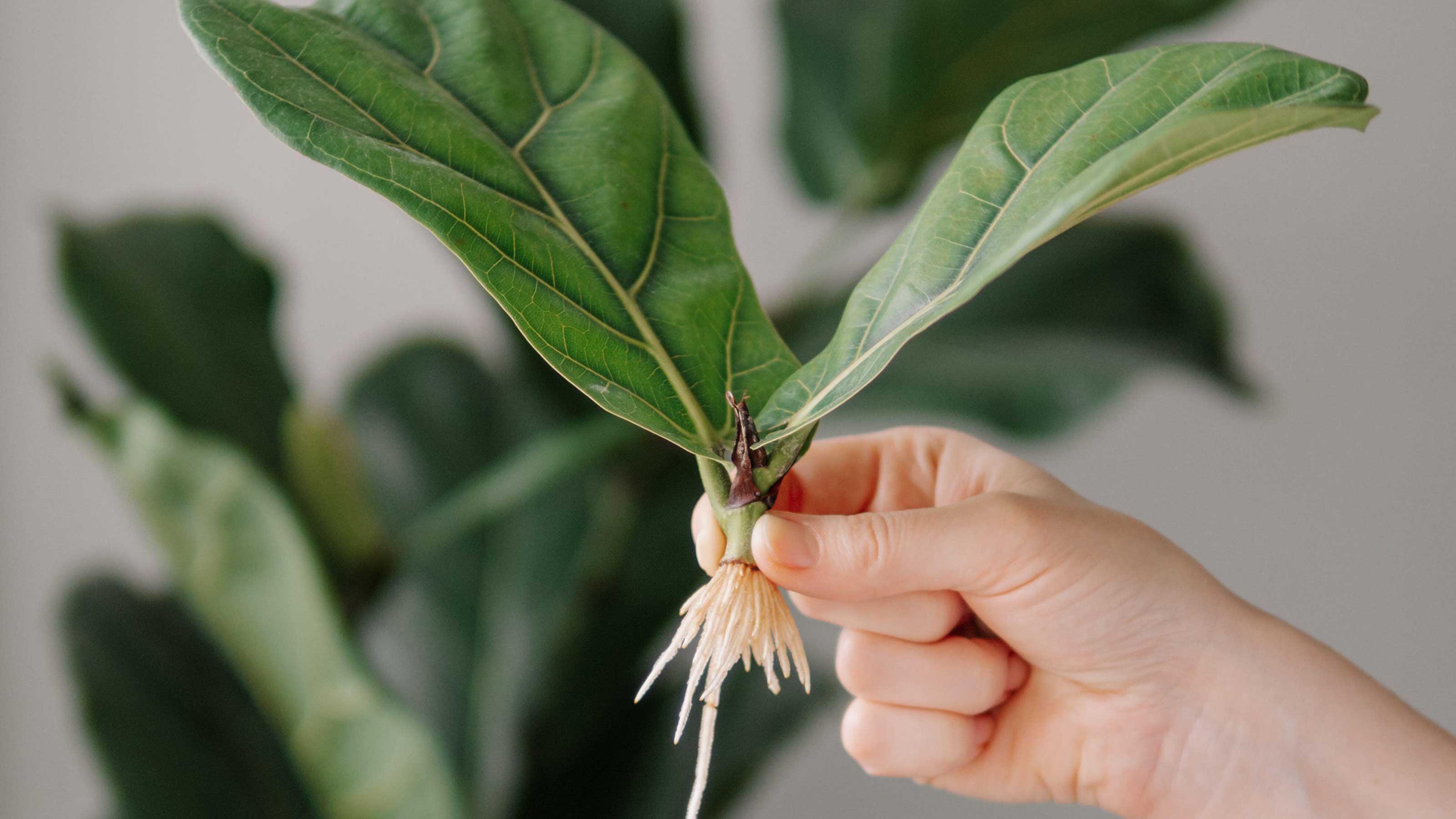

Have you ever wondered how to propagate a fiddle leaf fig, otherwise known as a Ficus lyrata? These tall tropical plants are gorgeous home additions, and if you've already got one, it's possible to create more for free.
You'll need to take what's known as a stem cutting. This is a short section of the plant put into a growing medium, where it will develop its own roots and continue to grow. We chatted to houseplant experts who shared their top tips on the process — and it's simpler than you might expect.
If you love caring for your fiddle leaf fig and fancy expanding your indoor plant collection, the following step-by-step guide will increase your chances of success.
How to propagate a fiddle leaf fig for new free houseplants
Taking cuttings is an effective and budget-friendly way to propagate many of the best indoor plants, so it's a useful skill to learn.
The best time to take cuttings is in the spring or early summer when the plant is actively growing. This is also the best time to prune many of your indoor plants, including Chinese money plants.
Step 1: Clean pruners
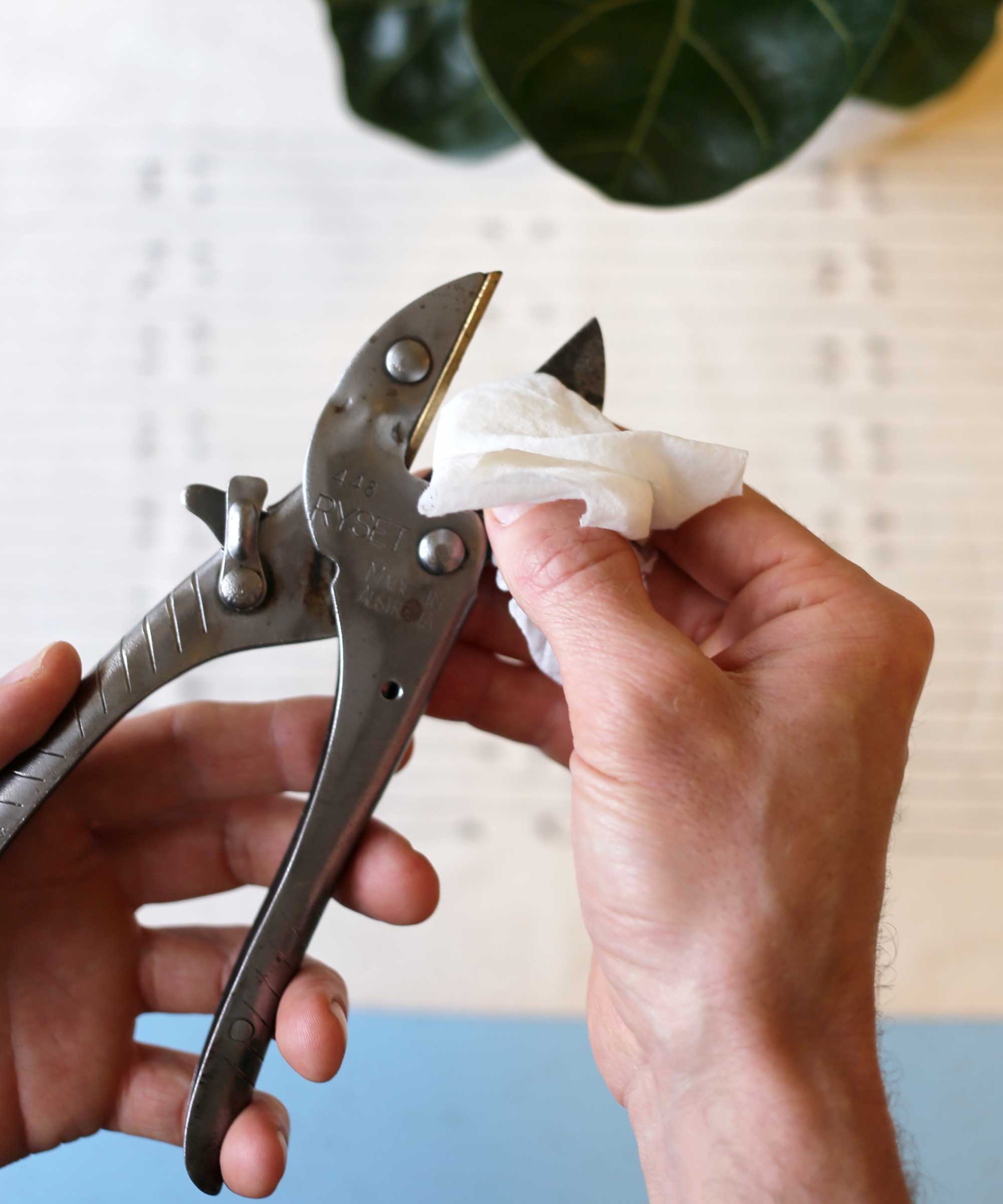
To cut your plant, you'll need a good pair of pruners. These titanium coated steel hand pruners from Home Depot are a popular option with great customer reviews. They'll come in handy for pruning, too — an important part of caring for houseplants.
You also need to make sure your pruners are clean to prevent pathogens from spreading onto your cutting or the parent plant and helping them stay healthy.
To clean your pruners, you can simply wipe them with a cloth dampened with antiseptic fluid such as Amazon Basics isopropyl alcohol). Ensure they are sharp, too.
Step 2: Take your cutting
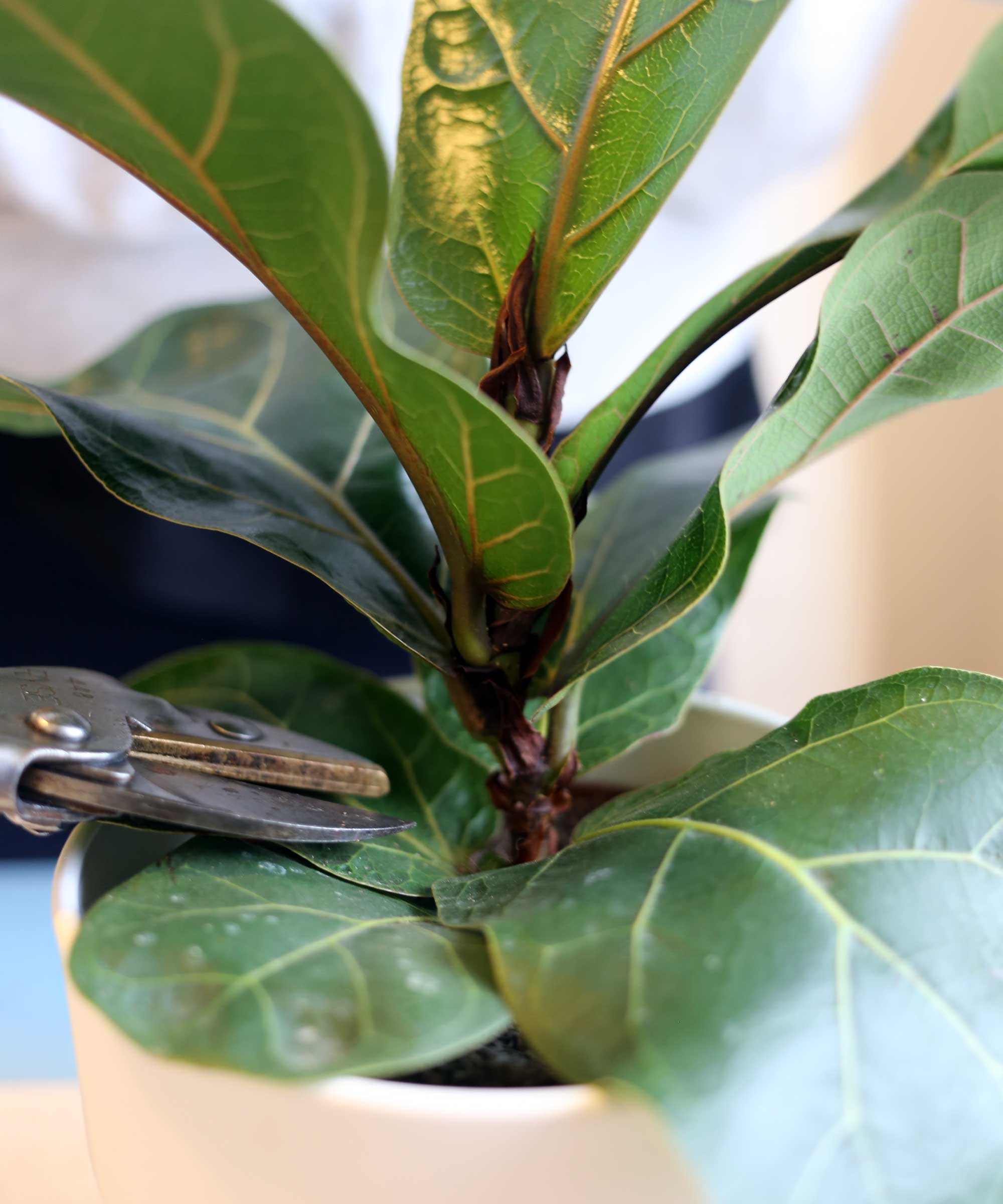
Nastya Vasylchyshyna, a resident botany expert at Plantum, recommends propagating your fiddle leaf fig by rooting the topmost shoot of the plant.
The cutting should have a few leaves attached — at least two. Make your cut slightly below one of the nodes (the points where leaves grow out of), Nastya instructs.

Nastya is a professional botany expert for the Plantum app that helps identify plants and plant diseases and provides care recommendations. Her specialization is plant morphology, phytopathology, and plant physiology.
Kayla Gajdascz, the co-founder of Mental Houseplants, recommends cutting at an angle, as this increases the surface area for rooting.
Cutting your fiddle leaf fig will release a toxic milky sap. Be sure to wear gloves, such as these cute nitrile coated waterproof gardening gloves from Home Depot , to protect your skin. Clean up any drips safely and promptly, too.

Kayla Gajdascz is the co-founder and owner of Mental Houseplants, an online plant retailer that sells a unique selection of houseplants to promote mental health awareness that is complemented by expert care tips and resources. Mental Houseplants further strengthens mental health support by partnering with and donating to the National Alliance on Mental Illness with each sale.
Step 3: Remove bottom leaves
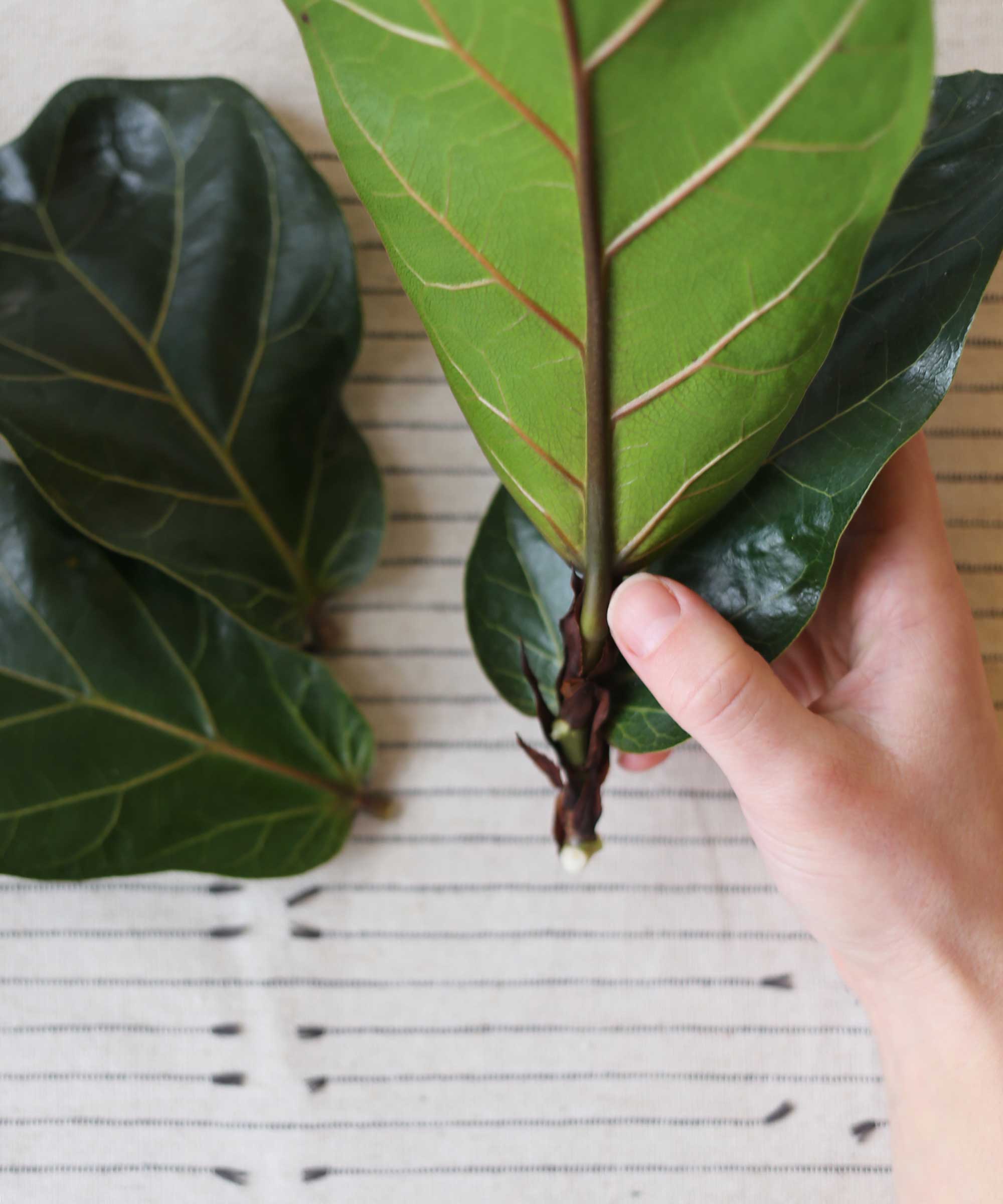
Once you've taken your cutting, Kayla says to remove the bottom leaf (or leaves) to expose one or two of the growth nodes. This is where new roots will emerge from, she explains.
"Leave the lowest 1.5–2 inches of the stem free of foliage," adds Nastya.
Step 4: Use rooting hormone powder
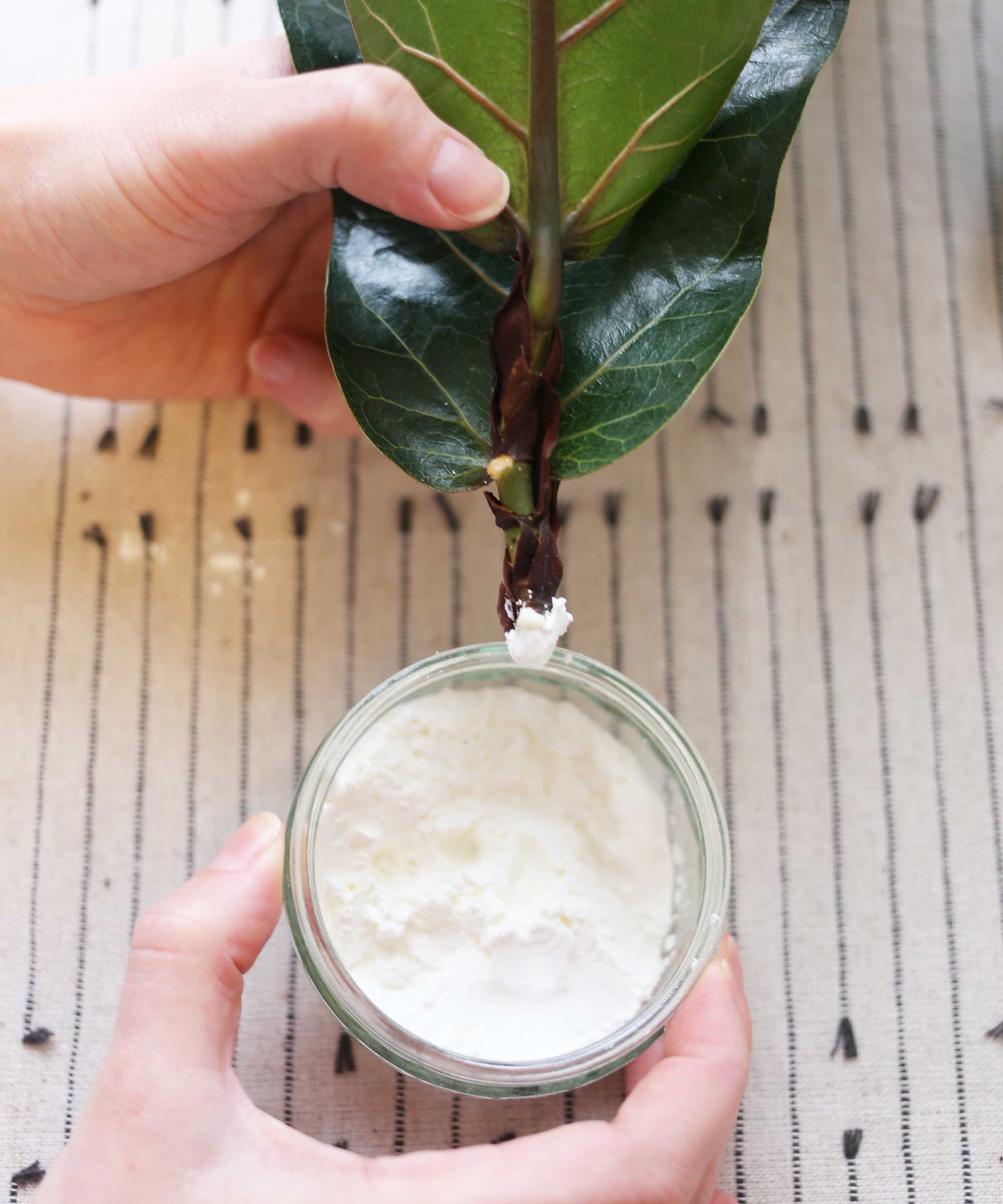
Kayla highlights an optional step — dipping the cut end of the stem in rooting hormone powder to encourage root growth. This Bonide rooting powder at Amazon is highly-rated with over 10,000 Amazon reviews.
Step 5: Pot it up
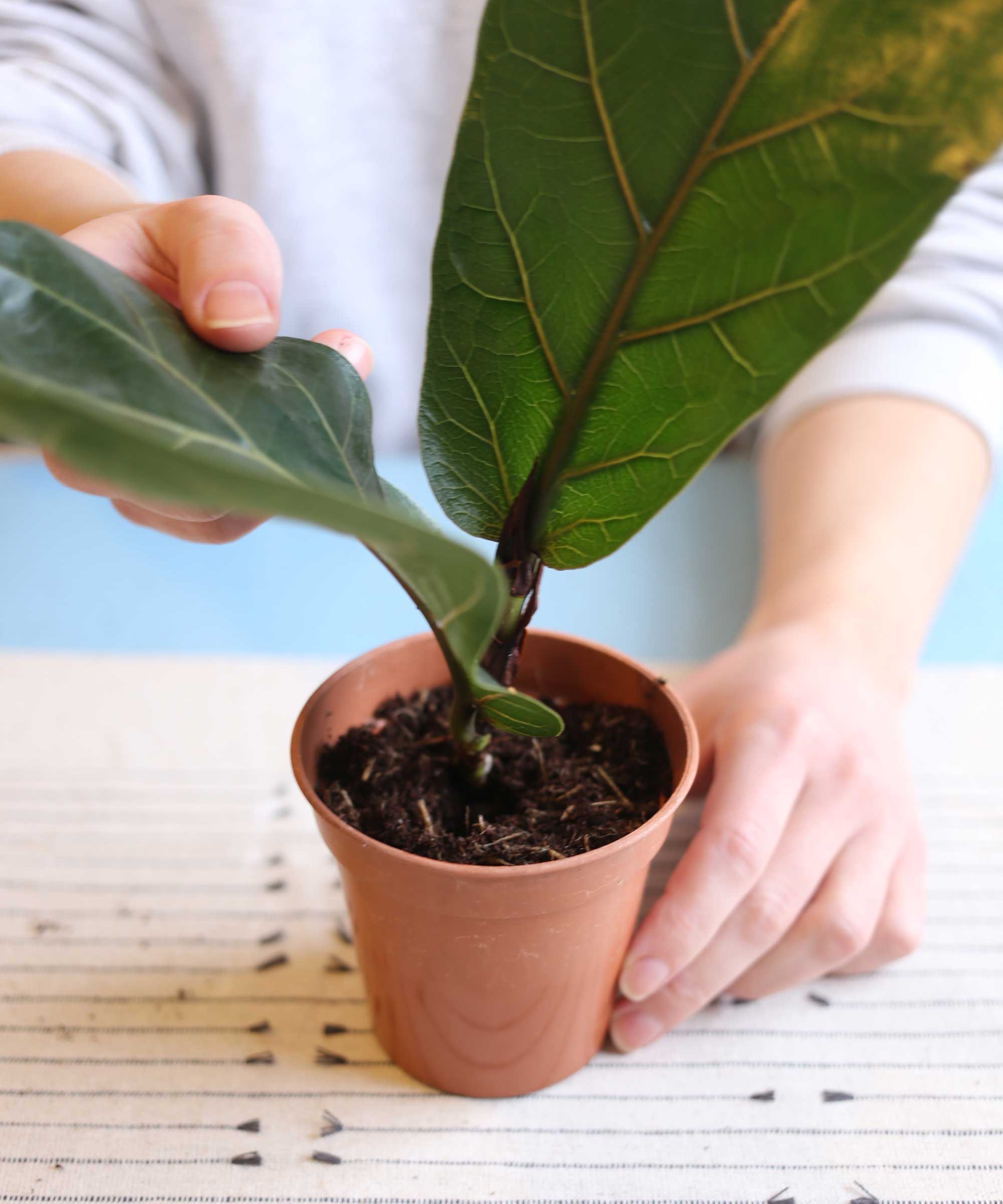
Now it's time to transfer your cutting into soil. Nastya says to fill a small pot with drainage holes at the bottom with a fertile, loose, well-draining potting mix. "Moisturize it evenly using soft, room-temperature water," she instructs.
We like the look of this Miracle-Gro potting soil for houseplants from Amazon, which would be well-suited for growing spider plants in, too.
"Make a small hole in the middle of the substrate and plant the cutting so that at least one node ends up below the soil line," Nastya continues. "Then, compact the potting mix slightly to keep the plant stable."
Kiersten Rankel, an expert from Greg, a houseplant-care app, recommends watering it sparingly, keeping the mix just barely moist as new roots emerge.
"Place your cutting somewhere bright, and give it time to adjust," she adds. "Fiddle leaf figs don’t handle change very well, so be patient." She also advises keeping your cutting in the same spot after potting it up.

Kiersten Rankel is a certified Louisiana Master Naturalist and regularly volunteers with local community gardens and nonprofits to help restore critical ecosystems along the Gulf Coast. In her spare time, she enjoys tending to her 150+ houseplants and vegetable garden.
Nastya also notes how you can cover the pot with a glass jar or a clear plastic bag to retain moisture and heat.
"Prevent mold growth by taking the cover off for about half an hour daily," she says. "Give the plant a small drink or mist the foliage before covering it again to boost humidity if needed. Keep the substrate evenly moist (but not soggy) at all times."
If you need a mister, this Haws copper one from Terrain is pretty as well as practical.
If you do decide to cover your cutting with a bag, Kayla recommends using sticks or straws to support it and prevent it from touching the leaves.
6. Give ongoing care
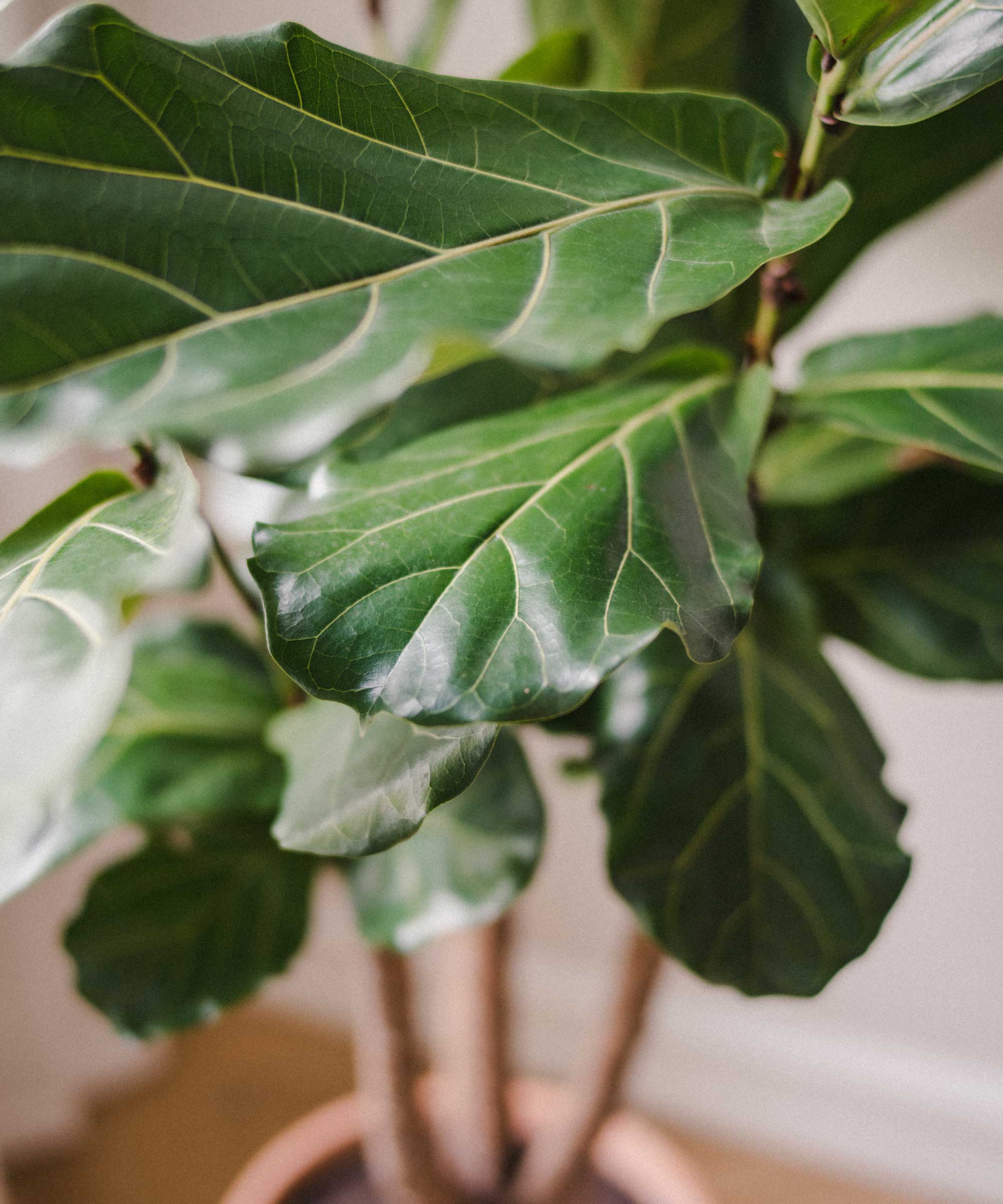
After a few weeks, give your cutting a gentle pull. If you feel resistance, it has rooted. Continue to look after it carefully as it continues to grow. Eventually, it will start to outgrow its pot, so you'll need to transplant it into a larger container with fresh potting mix.

This powder encourages fast root development for cuttings and is so simple to use. It can be used on philodendrons and hoyas, too.

Every gardener needs a good pair of gloves – and a pretty design is a bonus. These ones are comfortable and cute, with elasticated wrists.
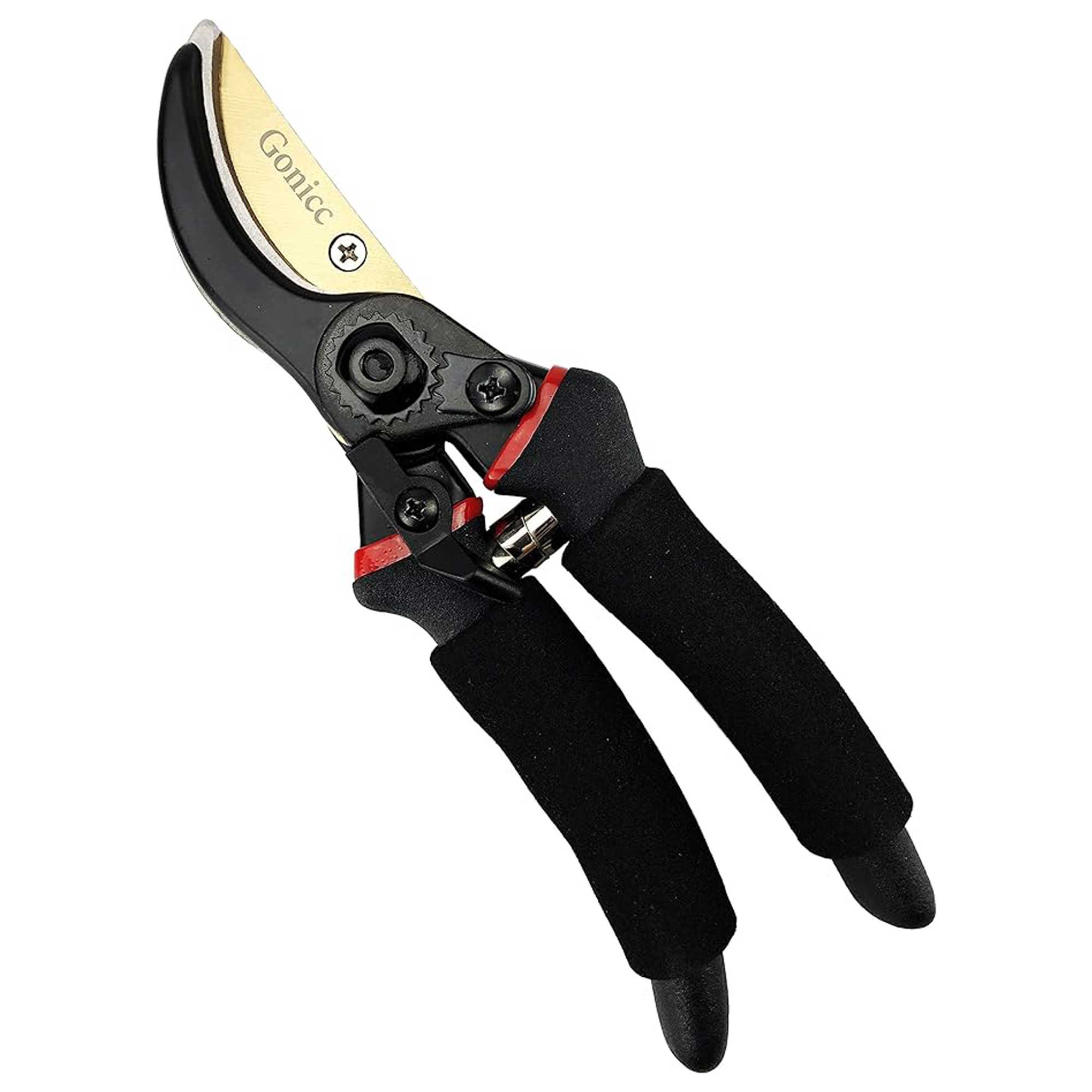
These popular, premium pruners feature a carbon steel blade and lightweight, non-slip handles. A must-have for every plant parent.
Or, propagate in water
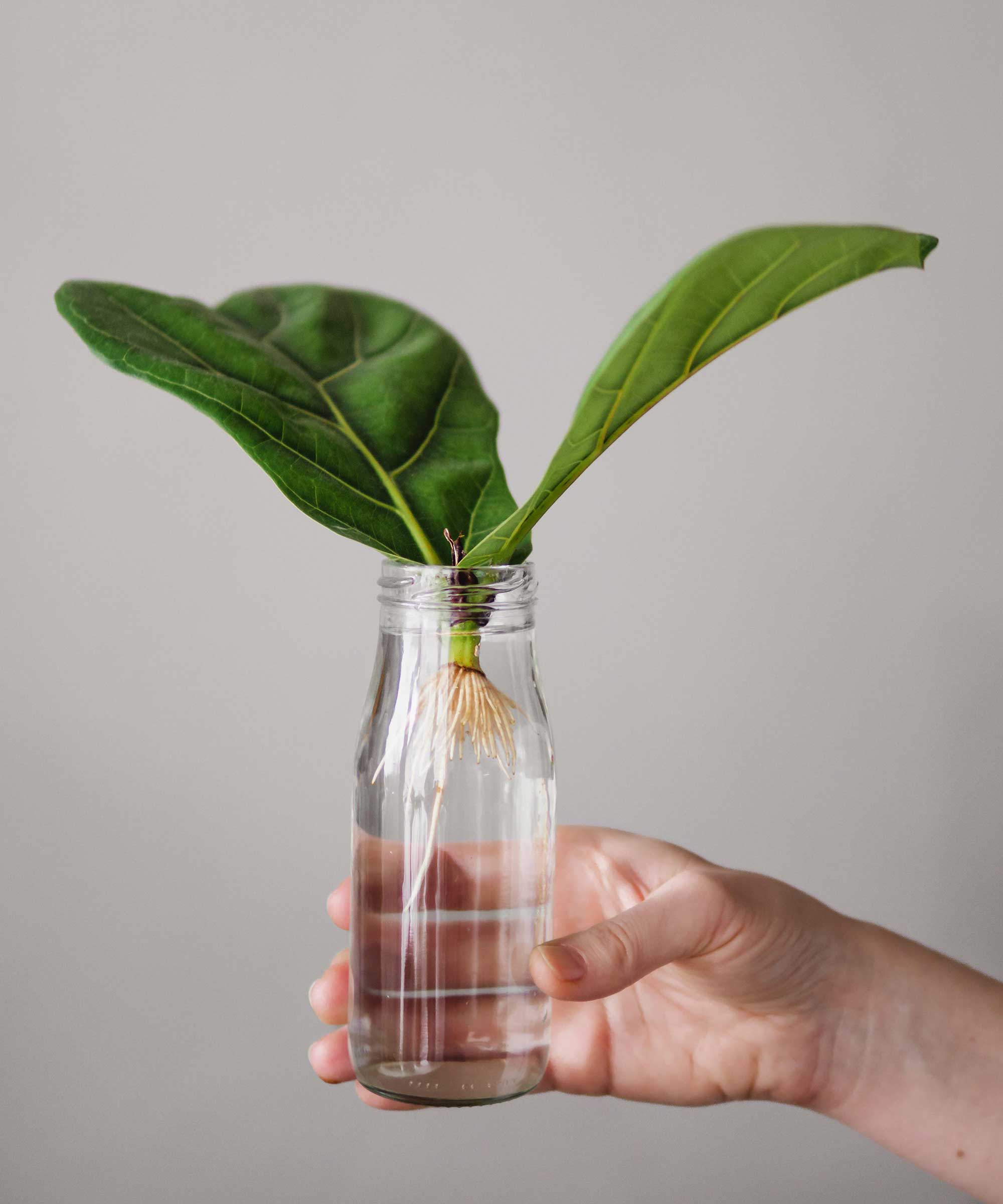
It's also possible to propagate a fiddle leaf fig cutting in water. In fact, Nastya says she prefers it, as it allows for precise monitoring of the whole process.
"Place it in a clear container filled with clean, soft, lukewarm water," Nastya says. She also recommends changing out the water once every three to five days and washing the walls of the container to keep them free of any coating.
"Take care to keep the leaves above the water at all times, since they might begin to rot otherwise," Nastya adds.
Paris Lalicata of The Sill says to avoid placing your cuttings in direct sunlight, unless it's morning sun. "Too much light during the rooting process can cause the stem cuttings to droop or take longer to root."
If parts of the cutting start to rot, Nastya recommends cutting them off about half an inch above the affected tissue as soon as possible using a sharp, clean tool.
Once the roots are about two inches long, Kiersten says to pot the cutting up, using a very well-draining mix. Give it plenty of time to acclimate, she adds.

Paris has been with The Sill for almost five years and heads up Plant Education and Community. A self-taught plant expert with over 10 years of experience growing houseplants, she currently maintains an indoor garden of more than 200 plants in the northeast. Her passion is making plant care more digestible for budding plant parents and sharing the many benefits of having plants indoors.
FAQs
How long does it take a fiddle leaf fig cutting to grow roots?
Paris says, "With proper care and patience, roots should begin to develop within a few weeks, signaling successful propagation."
According to Kayla, cuttings propagated in soil should root in four to eight weeks. In water, it should take two to four weeks – but it can sometimes take longer, she says.
"Remember that not all propagations will take, so be patient with your plant and yourself!" adds Kiersten.
There are other ways to propagate plants, depending on the variety. It's a whole world to discover, and can be super rewarding and it can save you some cash, too!
Join our newsletter
Get small space home decor ideas, celeb inspiration, DIY tips and more, straight to your inbox!

The garden was always a big part of Holly's life growing up, as was the surrounding New Forest, UK, where she lived. Her appreciation for the great outdoors has only grown since then; over the years, she's been an allotment keeper, a professional gardener, and a botanical illustrator. Having worked for Gardeningetc.com for two years, Holly now regularly writes about plants and outdoor living for Homes & Gardens. In her spare time, Holly loves visiting local English gardens and is particularly fond of relaxed cottage-garden schemes. She also loves prairie-style planting – the tapestry effect of grasses mixed with drought-tolerant blooms never ceases to delight her. Always happiest around plants, when she isn't swooning over gardens, she's looking after her ever-growing collection of houseplants and arranging seasonal flowers in her apartment to paint.
-
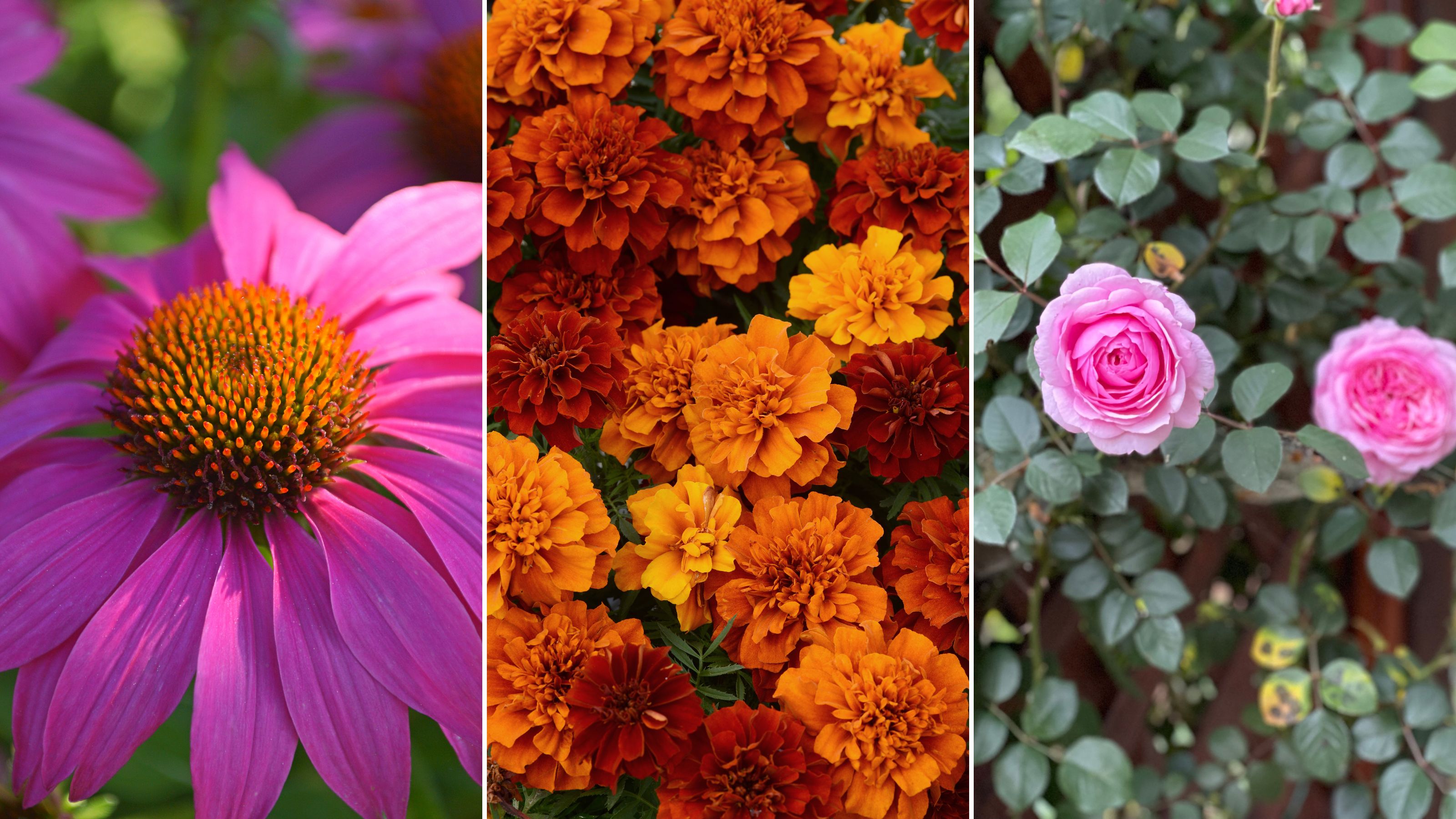 The 7 flowers to plant in August, according to gardening gurus
The 7 flowers to plant in August, according to gardening gurusKnowing what flowers to plant in August isn't always so clear-cut. But that's why we called in help from pro planters — here's what they said to pot.
By Becks Shepherd Published
-
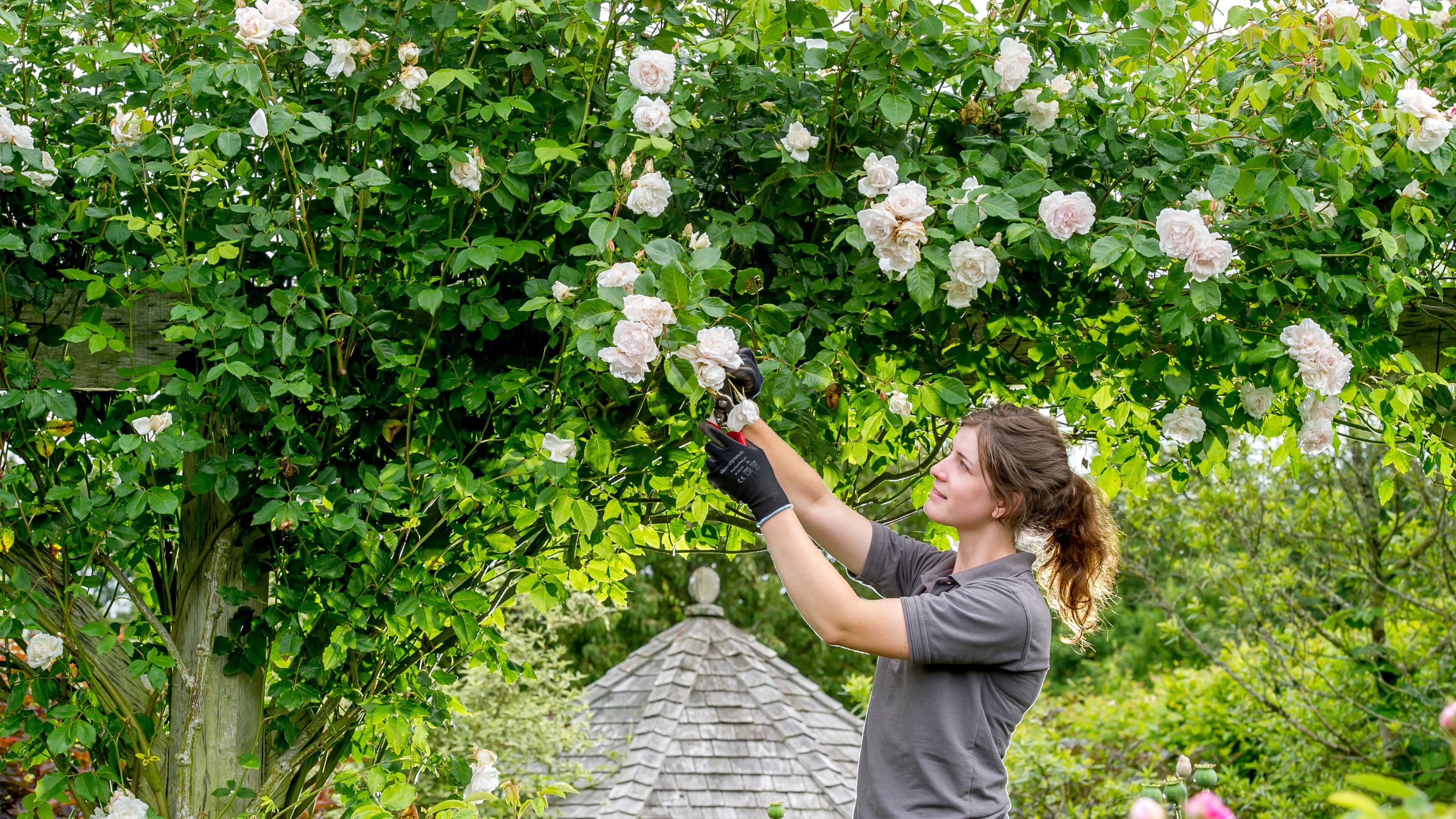 The 7 plants to prune in August — and the 2 pieces of greenery you shouldn't touch
The 7 plants to prune in August — and the 2 pieces of greenery you shouldn't touchWondering what plants to prune in August? We asked a gardening expert for their top tips plus info on what pieces of greenery to avoid pruning this month
By Becks Shepherd Published
-
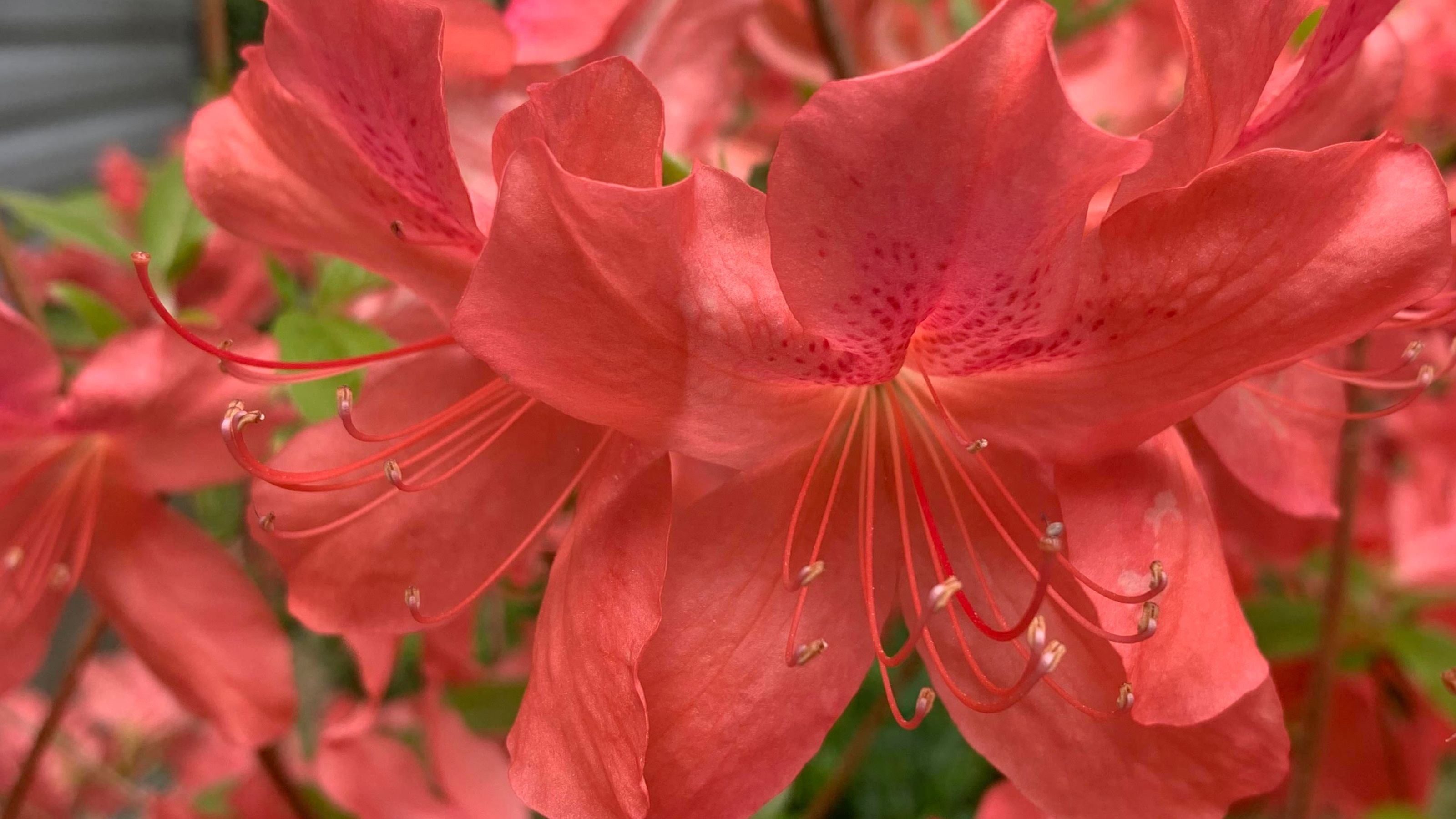 Do you need to deadhead azaleas? Top tips for pruning these flowering shrubs
Do you need to deadhead azaleas? Top tips for pruning these flowering shrubsWondering whether you need to deadhead azaleas? We asked a gardening expert for their top tips for looking after these blooms
By Becks Shepherd Published
-
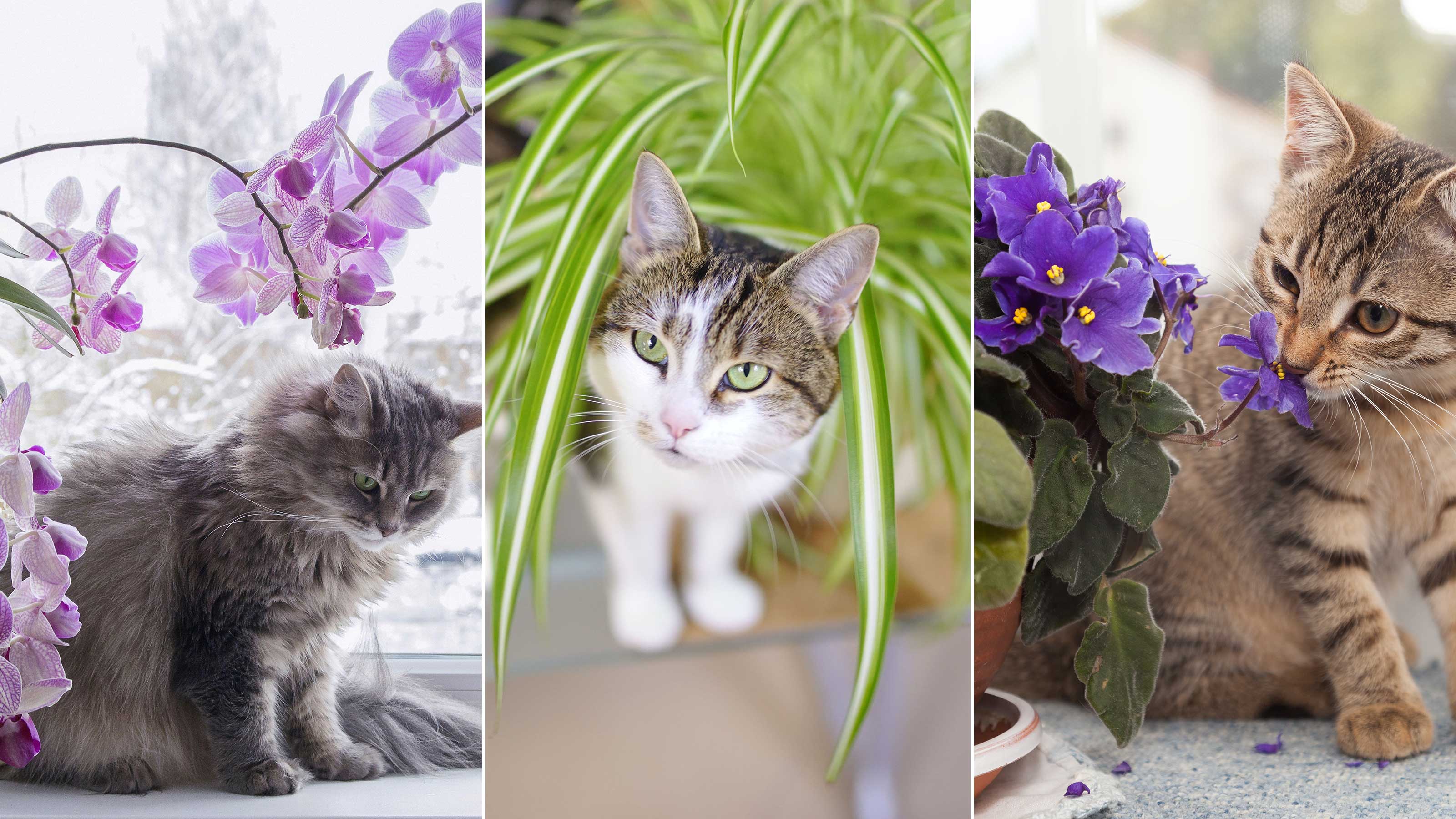 10 houseplants that are not toxic to cats — plus expert advice on keeping your pets safe
10 houseplants that are not toxic to cats — plus expert advice on keeping your pets safeKeep your four-legged companion safe by choosing these houseplants that are not toxic to cats, and learning the dangers of those that are, according to veterinary experts
By Holly Crossley Published
-
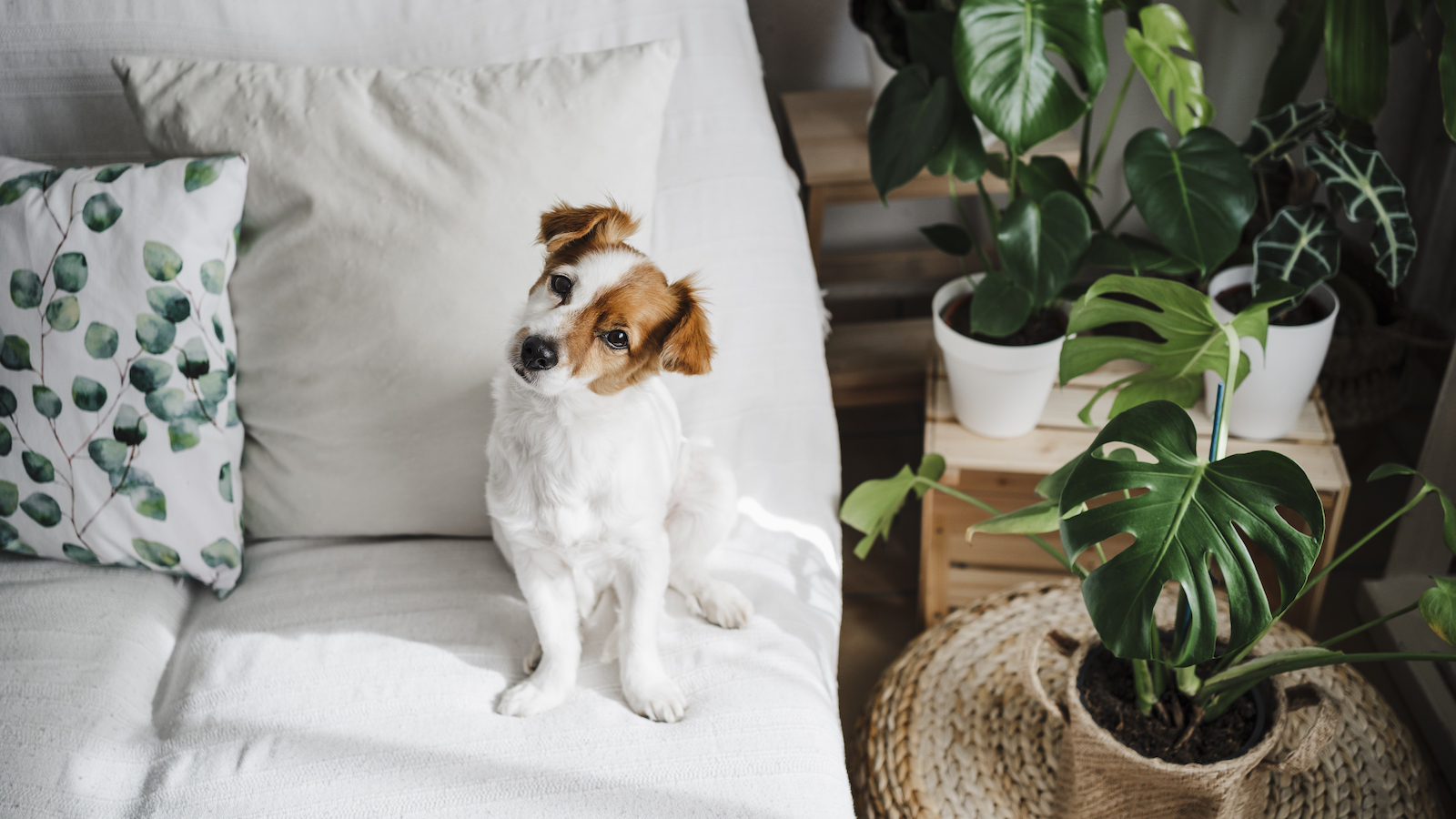 Which houseplants are toxic to dogs? Vet experts pinpoint problem plants and solutions
Which houseplants are toxic to dogs? Vet experts pinpoint problem plants and solutionsWondering Which houseplants are toxic to dogs? We spoke to vets about the problematic leafy greens, what they trigger in dogs, and how to find a solution
By Danielle Valente Published
-
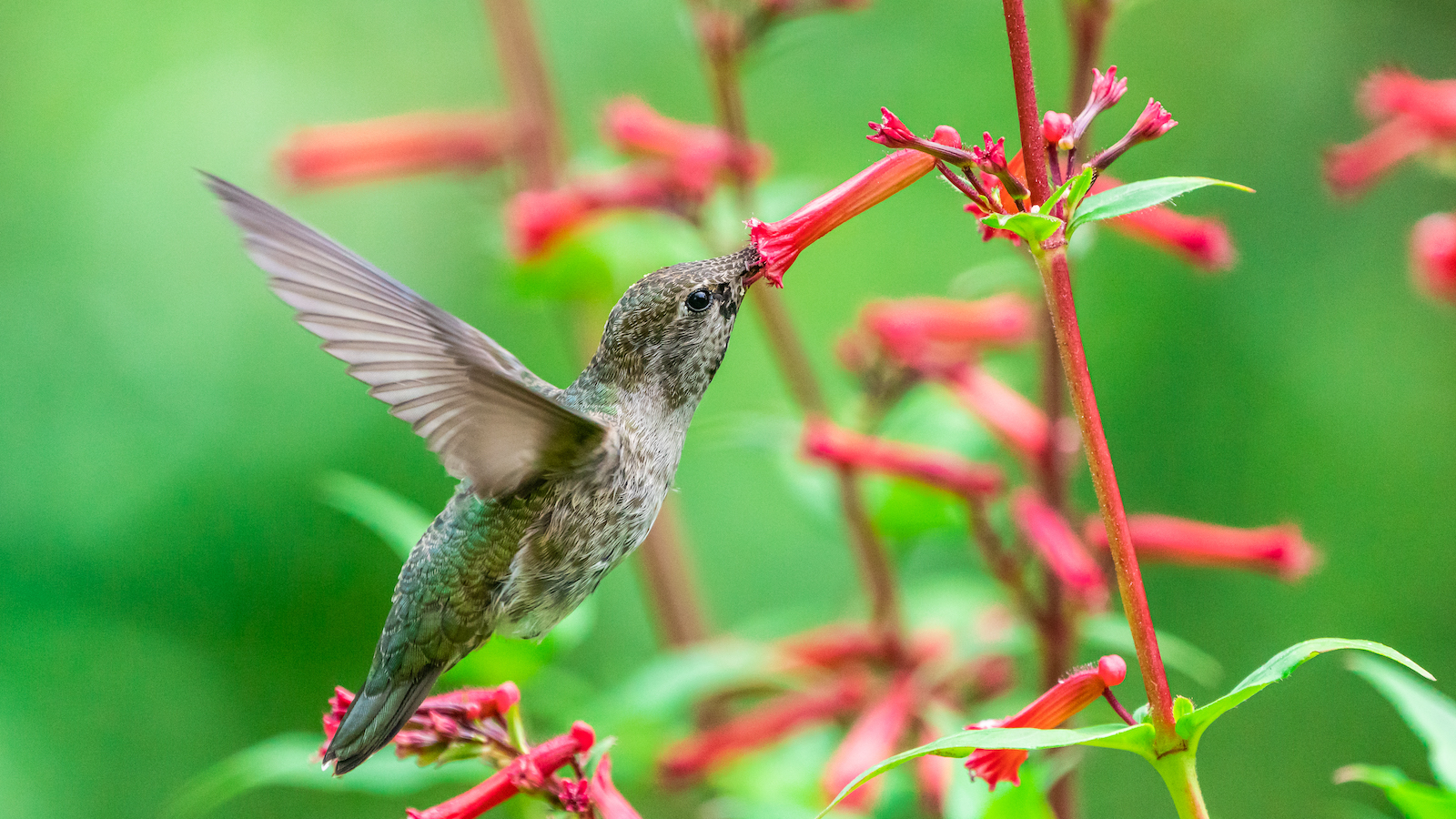 How to attract hummingbirds to your backyard, according to ornithologists
How to attract hummingbirds to your backyard, according to ornithologistsTrying to figure out How to attract hummingbirds to your backyard? These ornithologist-backed tips will guarantee you visitors in no time
By Danielle Valente Published
-
 How to make indoor plant leaves shiny, according to green-thumbed experts
How to make indoor plant leaves shiny, according to green-thumbed expertsLearning how to make indoor plant leaves shiny seems trivial, but this is not just about aesthetics. Here's how to clean them properly, and why you need to do it, according to pros
By Danielle Valente Published
-
 Does hydrangea bloom every year? Pros spill the dirt on the "garden favorite" and when to expect it
Does hydrangea bloom every year? Pros spill the dirt on the "garden favorite" and when to expect itWondering, "Does hydrangea bloom every year"? We asked the pros all about the garden favorite and how often to expect them — here's the dirt.
By Danielle Valente Published